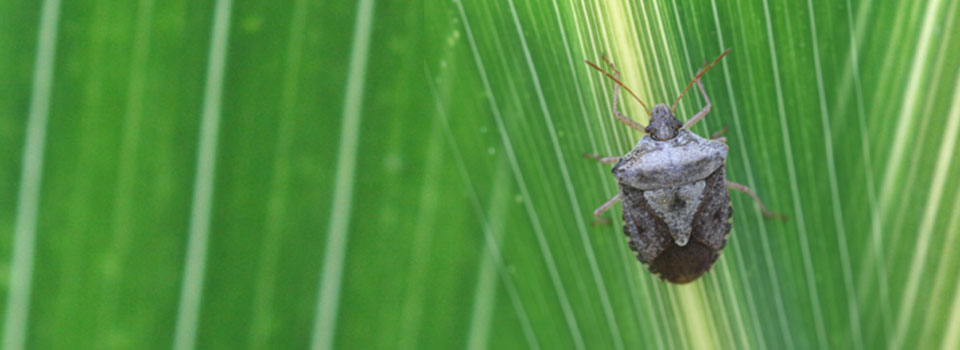In recent years, the stink bug has become a major problem for Georgia crops, particularly in cotton fields, where it costs farmers millions in losses annually. To develop more efficient methods to control the pest, a University of Georgia researcher wants to learn more about it, especially its travel habits.
“Our main mission for this project is to learn about the ecology and biology of the stink bug and then develop environmentally friendly control strategies that exploit these findings,” said Mike Toews, a research entomologist with the UGA College of Agricultural and Environmental Sciences in Tifton, Ga.
Georgia farms, like many in the Southeast, are diverse, with various crops planted from early spring until late fall in fields near each other.
In early spring, stink bugs emerge from roadside weeds or wooded areas where they spent the winter. They then migrate to developing crops. They linger along the way, feeding, looking for companionship and building populations in early-maturing crops like corn and wheat.
By late-summer, they’ve built up a hungry army, which turns its focus to the tasty developing cotton boll — the fruit that makes the lint. In Georgia, they claimed 20,000 bales of cotton, or $6 million in damage, in 2006 alone.
“Stink bugs start early in weeds, then move to corn, peanuts, soybeans and veggies before damaging cotton at the end of the season,” he said. “The idea is to figure out how we can prevent stink bugs from building up and damaging late-season plants like cotton.”
Toews and Clemson University entomologists Jeremy Greene, Francis Reay-Jones and economist Carlos Carpi are using a three-year $154,000 grant from the U.S. Department of Agriculture Southern Region Integrated Pest Management Center to pinpoint when and where the bug enters various Southeastern crops.
In Tifton, Toews is using cotton, peanut, soybean, grain sorghum, pecan, watermelon and corn fields, totaling 402 acres, as his research farmscape. Using sweep nets, traps, damage assessments and Global Positioning Systems technology, he’s learning about the bug’s reproductive habits, or cycles, and tracking its path through the farm.
He is closely monitoring and mapping the population build up and the times when stinkbugs enter cotton fields. They typically settle at the edges of the fields first, he said.
“We are targeting sprays on these edges at the times they are moving in the fields to prevent the need for spraying the entire field,” he said.
Typically, farmers scout fields for stink bug damage. Once a threshold level of damage is met, the entire field is sprayed. By targeting just the edges at the right time, he said, farmers could reduce their insecticide use by 75 percent; some by as much as 90 percent.
“By targeting sprays,” he said, “we’re not broadcasting the field and killing beneficial insects that can actually help fight other (cotton-eating) pests.”
Georgia’s subtropical climate suits cotton production. It also appeals to hordes of cotton-eating bugs. For decades, farmers sprayed insecticides on cotton 12 to 14 times during the growing season, or once a week, to protect it. Stink bugs were likely present then, too, but were controlled with those sprays.
The eradication of the boll weevil allowed farmers to stop spraying weekly. In the mid-‘90s, farmers started planting cotton varieties that contained a bacterium that killed caterpillars soon after they ate the leaves. That bacterium doesn’t hurt stinkbugs. Farmers now spray insecticide only two or three times during the growing season. Without the added chemical control, stinkbugs have now emerged in force.
Georgia’s ranks second in cotton production behind Texas. The state’s crop is worth between $500 million and $600 million annually.
